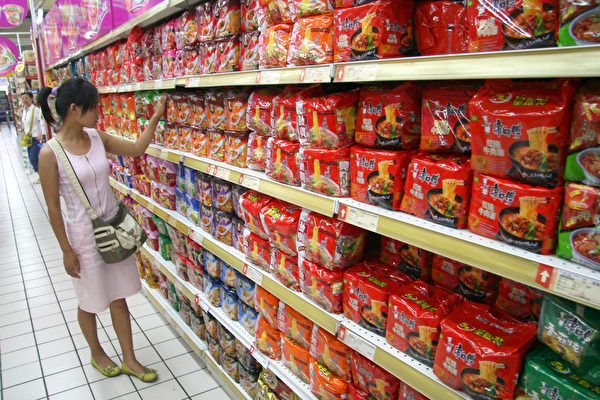Kang Shifu recently released its financial report for the first half of 2025, showing a typical “decrease in revenue, increase in profit” performance: a total revenue of 40.092 billion yuan, a decrease of 2.7% year-on-year; a net profit of 2.271 billion yuan, an increase of 20.5% compared to the same period last year. This financial report reveals a fact: Kang Shifu’s products are selling less, but earning more. And the core strategy behind this achievement is raising prices.
According to data from the World Instant Noodles Association, in the three years from 2020 to 2023, the consumption of instant noodles in China decreased by 4 billion packets, from 47.8 billion packets to 43.8 billion packets. In the first half of 2025, sales continued to decline by 8.9% compared to the same period last year.
Reported by the well-known financial media “Kung Fu Finance,” what does 4 billion packets mean? Calculated at 5 yuan per packet, this equals a market evaporation of 20 billion yuan.
The first killer: food delivery.
Kang Shifu’s predicament is not isolated but a crisis facing the entire instant noodle industry. In 2024, China’s food delivery market exceeded 1.27 trillion yuan, with 592 million users. The introduction of a 6 yuan “mixed rice” (delivering two meat and one vegetable dish) directly led to the disappearance of the cost-effectiveness advantage of instant noodles. Consumers are more inclined to choose freshly cooked food delivered hot, leading to the irreversible replacement of instant noodles in consumption scenarios.
Research shows that for every 1% increase in the food delivery market, instant noodle consumption decreases by 0.0533%.
The second killer: health consciousness.
With heightened consumer health awareness, the labels “deep-fried” and “high salt and high fat” have branded instant noodles as “junk food.”
The third killer: high-speed rail.
High-speed rail has significantly shortened travel times, nearly eliminating the “quick hunger relief” scenario for instant noodles during travel.
Although Kang Shifu still leads the industry in instant noodles (with a market share of 45%) and beverage business, the financial data expose its precarious situation.
Kang Shifu’s consecutive decline in revenue reveals the real problems. In the first half of 2025, instant noodle revenue was 13.465 billion yuan, a decrease of 2.6% year-on-year. This marks the second consecutive decline after a 1% drop in the first half of 2024, with the rate of decline accelerating. The beverage business fared even worse, with revenue of 26.359 billion yuan, a decrease of 2.6%, resulting in a loss of nearly 700 million yuan.
The contraction of channels reveals a deep crisis: Kang Shifu’s number of distributors has decreased from 67,215 to 63,806, a reduction of 3,409; the number of direct retailers has decreased from 220,623 to 219,124, a decrease of 1,499.
This indicates that Kang Shifu is actively shrinking its front lines, abandoning those channels that are not profitable. While it sounds like refined operations, in reality, it is a forced “strategic contraction.”
From 2021 to the present, Kang Shifu’s number of distributors has decreased from 80,726 to 63,806, and direct retailers have decreased from 256,567 to 219,124. Over three years, the channel has shrunk by more than 20%.
It is reported that this contraction can enhance individual store efficiency in the short term, but in the long run, it will weaken the brand’s market coverage capacity and influence. When consumers can’t find Kang Shifu’s products in more and more places, the brand’s power naturally diminishes.
Facing multiple pressures, Kang Shifu chose to raise prices, temporarily offsetting the decline in sales with higher unit prices, stabilizing profits. However, this strategy faces significant risks: even a slight price increase can prompt price-sensitive consumers to opt for other brands.
Classic bucket instant noodles increased from 4.5 yuan to 5 yuan, while a 1-liter bottle of iced tea went from 4 yuan to 5 yuan. This increase of 50 cents to 1 yuan translates to a price hike of 11% to 20%. Kang Shifu’s management directly stated at a performance meeting, “Selling a 1-liter bottle of iced tea for 4.5 yuan can improve the gross profit margin by several points.”
Continued price hikes may further alienate consumers, accelerate market share loss, and not be a long-term solution.
The report states that Kang Shifu’s plight reflects a deeper commercial reality: no industry can remain carefree forever, nor can any company rest on past success indefinitely.
Once considered the “national fast food,” instant noodles were long dominated by Kang Shifu. But times have changed, consumer demands have changed, and the competitive landscape has also shifted.

